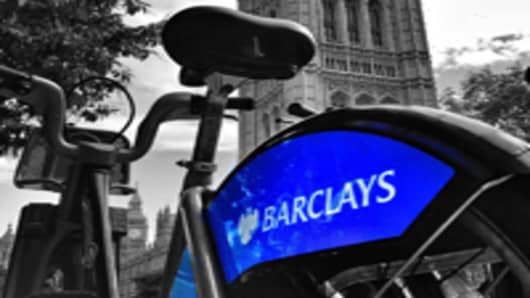Libor is the outcome of a complex submission process. For the biggest dollar and euro Libor contracts, 16 banks submit estimates of their own borrowing costs to Thompson Reuters. The highest four figures and lowest four figures are dropped, and the central 8 averaged. This means that a bank attempting to throw in a low-ball figure would usually fail to manipulate the final number at all, producing no gains for its traders. (Get the latest Libor and Treasury/Euro-Dollar credit spreads.)
In fact, many who work in credit and derivatives trading are convinced that there is no way for Libor to be consistently manipulated for trading gains. Every single one of the traders I've talked to thinks the procedure is just too robust, despite the lack of regulatory oversight, for any individual bank or trading group to "move the needle."
But we have the stubborn fact that Barclays traders apparently believed they could move the needle. Were they delusional? Or had they figured out something other traders missed?
Let's start with the basics. Banks do have incentives to typically understate their borrowing costs. In a crisis, for example, a bank might want to conceal from the market and regulators the fact that its borrowing costs are rising. (This is what most of the Libor scandal coverage related to Barclays has focused upon.) But a bank misreporting its borrowing costs for this reason doesn't really care about the ultimate Libor number. It's not really trying to manipulate Libor at all. It's trying to manipulate the perception of its financial health.
Banks also have another institutional reason to misreport Libor. The balance sheets of many banks are counter-intuitively skewed to profit from lower interest rates in a non-inflationary environment. Although we usually think of interest revenue as being important for banks, modern banks make money in ways quite apart from charging interest on loans. In fact, the largest banks typically have large interest-rate derivative portfolios and interest-rate trading desks that can create financial incentives to misreport rates.
Economists Connan Snider and Thomas Youle, of UCLA and the University of Minnesota, respectively, examined bank exposure to Libor and found powerful incentives to manipulate. Bank of America, Citigroup and JPMorgan Chase, for example, each have huge derivative portfolios tied to Libor and each reported huge profit increases while Libor fell in the first quarter of 2009. Because each bank provides so little transparency about the source of the earnings, however, it is impossible to tie the rising profits directly to falling Libor. But the circumstantial evidence is quite strong.
Snider and Youle explain:
"Given the large notional values, if their portfolio had just a net exposure of 1% to the Libor this could contribute significantly to their net interest income. J.P.Morgan, for example, possessed a notional value of over $54 trillion in interest rate swaps in the fourth quarter of 2008. If their swap position had just a 1% net exposure to the Libor, then their costs on their contracts would be proportional to $540 billion. It then follows if they were to succeed in modifying the Libor by 25 basis points in a quarter they would make 1=4 540 :025 = 0:337 or $337 million in that quarter. If they had a 10% net exposure they could make $3.37 billion
So a small change in Libor could result in potentially large profits, depending on portfolio composition.
But, again, is it possible to manipulate Libor? Certainly, if there were a cartel of banks who secretly agreed to push down (or up) Libor, it would be possible. But there's no evidence of any such cartel. What's more, traders would be tempted to break from the cartel to create surprise swings in Libor and damage their competitors.
Youle and Snider present a more nuanced method of manipulating Libor. They note that Libor submissions, which happen every day, are highly predictable. Typically, each bank's quote is close to or exactly the same as the day prior. We can add to this that the submitters often make use of back-channels—talking to other traders, data collectors, analysts—to predict if the market has moved overnight.
A bank armed with the ability to predict the Libor submissions of others could aim its own Libor submission at a "pivot point" at the bottom of the central two quartiles. This would weight the average downward.
Youle and Snider discover that the actual submissions of many banks follow this pattern. Bank submissions are bunched around the pivot point, implying banks are trying to manipulate Libor downward.
This still doesn't really explain, however, what it was the derivatives traders at Barclays thought that they were accomplishing by requesting changes to the submissions on particular days. It still should have been all but impossible to move Libor by very much. Were the traders just deluded?
Follow John on Twitter. (Market and financial news, adventures in New York City, plus whatever is on his mind.) You can email him at john.carney@nbcuni.com.
We also have two NetNet Twitter feeds. Follow CNBCnetnet for the best of the days posts, including breaking news. Follow NetNetDigest for a feed of every single post each day.
You can also be our friend on Facebook. Or subscribe to John's Facebook page.
We're on Google Plus too! Click here for John's Google+ page.
Questions? Comments? Tips? Email us atNetNet@cnbc.comor send a text message to: 917-740-8477.
Call us at 201-735-4638.



